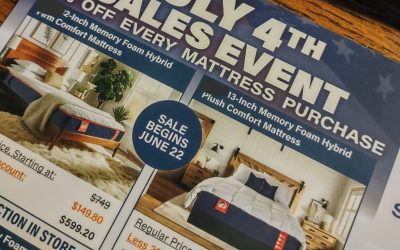A funny thing about retailers having sales... it might be counterproductive. The week I am publishing this article and podcast is the 1st week of July 2024 although I'm actually writing this on June 20th. Today when I checked the mail I saw a piece of junk mail from a...
Marketing and Advertising Insights
Breaking the Ties
In the world of selling products and services, when all things are equal, the decision we use to determine who we purchase from is based on… perception! And that perception is, who’s better, who’s more trustworthy, and who’s more reliable! In most cases, many...
Your Attention Please
“Hear-Yee, Hear-Yee!” “Can I have your attention please?” “Ahem – Attention please!” There are a lot of ways to capture someone, or a group’s attention, including words, sounds, and gestures. In advertising, capturing one’s attention is the first step in effective...
First on Race Day
All month long, I've been featuring articles I first sent out in my weekly Sound ADvice newsletter and this one was sent to subscribers last fall. If you'd like to get them delivered to your inbox each week, just send an email to Scott@WOWO.com and I'll add you to my...
Compounding Your Brand
This month I'm featuring articles that were sent to subscribers of my weekly newsletter, Sound ADvice. If you'd like a free email copy send me an email to Scott@WOWO.com. Albert Einstein said, “Compound interest is the eighth wonder of the world. He who understands...
A Lesson on Advertising from Preachers and Teachers
For the month of May I'm sharing recent articles from my weekly Sound ADvice Newsletter. It's free just for the asking and if you want to be added, drop me a note to Scott@ WOWO.com. The goal of every preacher and teacher is to grab the attention of the people they...
Once in a Lifetime Eclipse
It's been a few weeks but on April 8th millions of us in the United States were in the path of a solar eclipse. Here in Indiana, the main event was shortly after 3pm as the moon blocked the light from the sun for a few minutes. Where I live, Ft. Wayne, Indiana, we...
Pitfalls of Pinpoint Targeting
A little of this and a little of that can work when making cookies in the kitchen. But when it comes to marketing your business, having the correct “Media Mix” is crucial to capturing your immediate sales, and more importantly, your future sales and market share....









